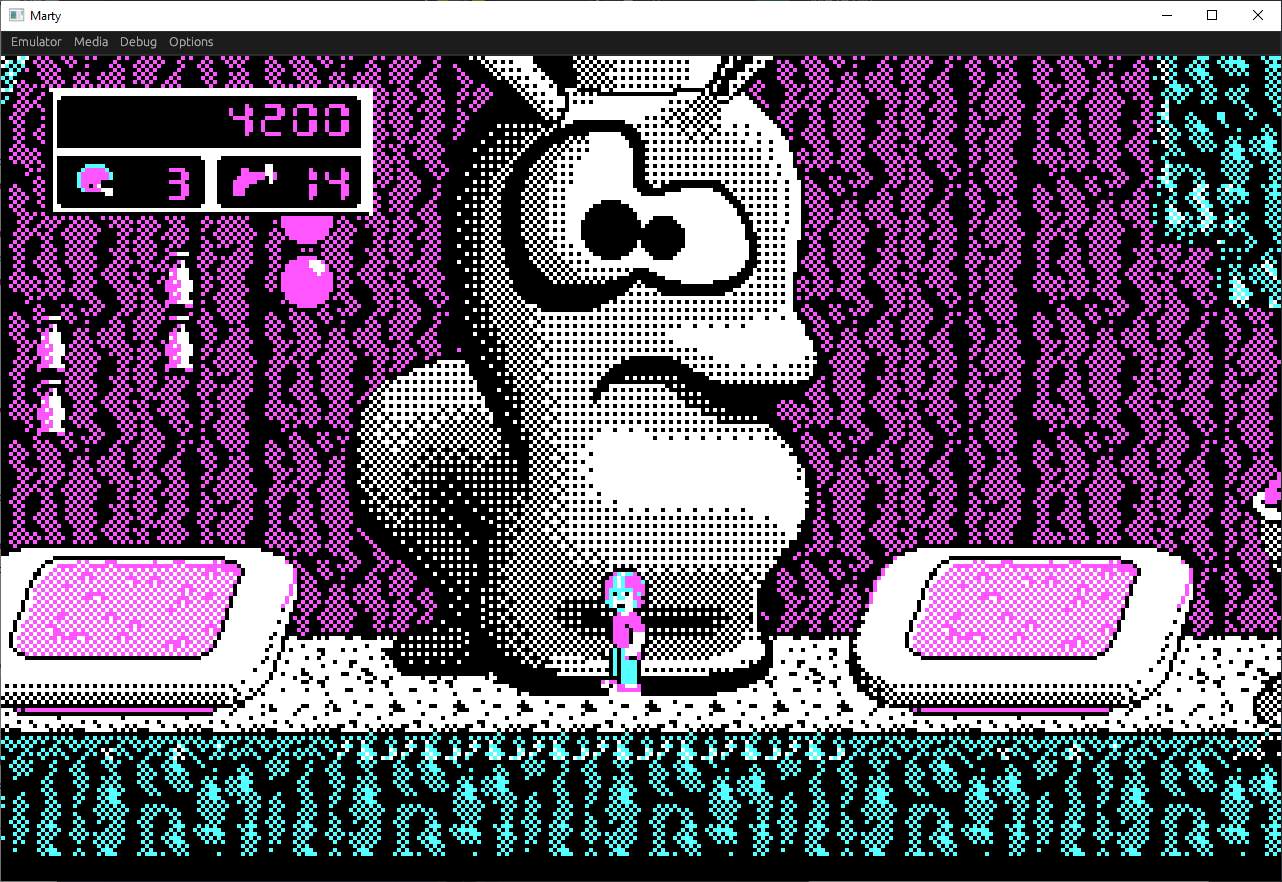And emulator is software that allows a computer system to behave like another device, often with a completely different configuration. The emulator reproduces the functionality, behavior and interface of a system on a machine with often completely different characteristics. A emulatore IBM PC/XT is designed to replicate the operation of an IBM PC/XT computer, introduced to the market in the early 1980s.
This year marks the 40th anniversary of the birth of the IBM PC/XT computer: in another article we wanted to remember the system that kicked off the era of personal computingwith many producers since then starting to introduce theirs IBM-compatible PCs.
What is an IBM PC/XT emulator and how MartyPC works
An IBM PC/XT emulator allows you to run programs and games developed for the original system using modern machines. By simulating the hardware of the original PC/XT, including the processor, memory, motherboard, input/output controllers and other components, the software can function as if it were running on the IBM machine of the time.
L’accuracy not performance of an emulator may vary depending on the specific implementation and resources of the host system. The creator of the MartyPC project, recently made public on GitHub, worked on these aspects. It is an emulator capable of reproducing the functioning of PC IBM 5150 e 5160 XT originals. Developed in the Rust language as of April 2022, MartyPC it went far beyond the goals that the author had set.
In fact, the project aims to become thereference emulator: it is in fact written in a clear and legible way, it describes in great detail the functioning of the system and the hardware, it is full of debugging tools, it integrates the possibility of logging events for the benefit of developers and “old school” software .
In another article we focused on the differences between emulation and virtualization, even from the web browser level.
Because MartyPC is a very accurate IBM PC/XT emulator
The developer of MartyPC explains that he has worked hard to make theIntel 8088 CPU emulation. To do this, use was made of a real 8088 CPU connected to a microcontroller Arduino MEGA to validate the behavior of the emulator.
As explained in the page dedicated to the Arduino8088 project, the author of MartyPC has thus been able to execute an instruction simultaneously on the emulator and on a real CPU, then comparing the results obtained, cycle by cycle.
The famous demo of 2015 8088 MPH focuses on creative and optimized use of the hardware resources available on the IBM PC/XT. He wants to showcase the graphics and sound capabilities of the original IBM system in ways that would have initially seemed impossible, given the very limited technical specifications of the time. The demo has become popular for its ability to explore the potential of computer vintage. It makes it clear that even the most limited platforms can produce impressive results when you have a thorough understanding of their capabilities.
More recently the author of the emulator has also successfully implemented the execution of the demo known by the name of Area 5150. Thanks to the use of WebAssembly, it can work inside the normal web browser.
Perfect rendering of the behavior of the CPU and the CGA monitor used on IBM PCs of the time
MartyPC not only guarantees aCPU implementation 8088 exact cycle-by-cycle (it adheres to the timing set at the microcode level), but does the same for CGA support.
The CGA graphics (Color Graphics Adapter) is a PC standard introduced by IBM in 1981 that supported a maximum resolution of 320 x 200 pixels with a 16-color palette, of which only 4 colors could be displayed simultaneously. There refresh rate it was 60Hz for color monitors and 50Hz for monochrome monitors.
Despite its low resolution and limited graphics capabilities, CGA was used extensively in the early years of PCs and paved the way for the development of later standards such as OWNER (Enhanced Graphics Adapter) e VGA (Video Graphics Array).
The MartyPC emulator correctly represents the dot clock of the IBM PC/XT which was three times the operating frequency of the CPU. The dot clock in the context of CGA it refers to the clock frequency used for generate the video signals for graphical output. The points or “dots” that make up the image on the screen were generated at the speed set by the dot clock.
Particularly appreciable is also the correct rendering of the monitor output, overscan included, which most other PC emulators never bother to do. L’overscan was a common phenomenon due to the limited capabilities of CRT monitors (Cathode Ray Tube) used at the time: Refers to the portion of the computer-generated image that is cropped or hidden outside the viewable area of the monitor screen.
How to try MartyPC
Without installing anything, you can try the MartyPC emulator using the various implementation demos of the IBM PC/XT system available on this page.
Otherwise you can use the MartyPC user guide to clone the GitHub repository, download the various ROMs made available by the author and start the emulator using its graphical interface.
MartyPC include FreeDOS 1.3 in order to present an immediately functional platform. However, this version of DOS is characterized by high memory usage and some programs and games may not work. The advice is to use an older version of DOS (release 3.3 is suggested for machines of the time emulated via MartyPC).

